Getting kids to help at home
All about Montessori practical life activities with Saniyyah Khalilallah
Today I’ve got a lovely interview for you with Saniyyah Khalilallah from SKMontessori. Saniyyah has just published two wonderful books about Montessori practical life activities to get our kids to help at home – I Did It Myself and I Help At Home – so she is definitely the right person to give us some advice on getting our kids to do these activities at home.
1. Saniyyah – we’d love to learn more about you
After graduating from college at Illinois State University I moved to Chicago knowing that I wanted to work with children but just not sure in what capacity. I found a job at a Montessori school not knowing much about the philosophy, besides the little I learned while studying Psychology in college. I fell in love with the education and quickly went to get my certification for the Primary age group. After being an assistant for a few months, I was running my own classroom shortly after a year.
Working in three different Montessori schools in Chicago has opened my eyes to how important this scientific method is to young children. One of my favorite quotes in a classroom to hear is, “I did it!,” said proudly by a student who just mastered a skill they have been working hard on achieving. This is where the titles for my books came from! One Montessori quote that I always kept in the back of my mind when I was teaching was, “The children are now working as if I did not exist.” These words forced me to step back and let children handle conflict or even allow the child to have a proud moment alone without me taking over. I loved watching children figure things out and come out even more confident than how they came in. I am still in Chicago, which has a beautiful Montessori community, trying to spread knowledge to families and children!

2. For those that don’t know much about practical life activities, what are they and why do we incorporate these into our Montessori classrooms and homes?
To me, practical life activities are the foundation of a Montessori environment. Through these thoughtful lessons children learn independence, develop concentration and even coordinate muscles that are imperative for their future. The activities are stepping stones to not only life lessons but advance academics in the classroom. A child will learn how to wash their own hands, prepare a snack, learn through nature by watering and taking care of plants and so much more. While these activities give the child the opportunity to do things for themselves the same lessons have indirect benefits that will be carried on through life.
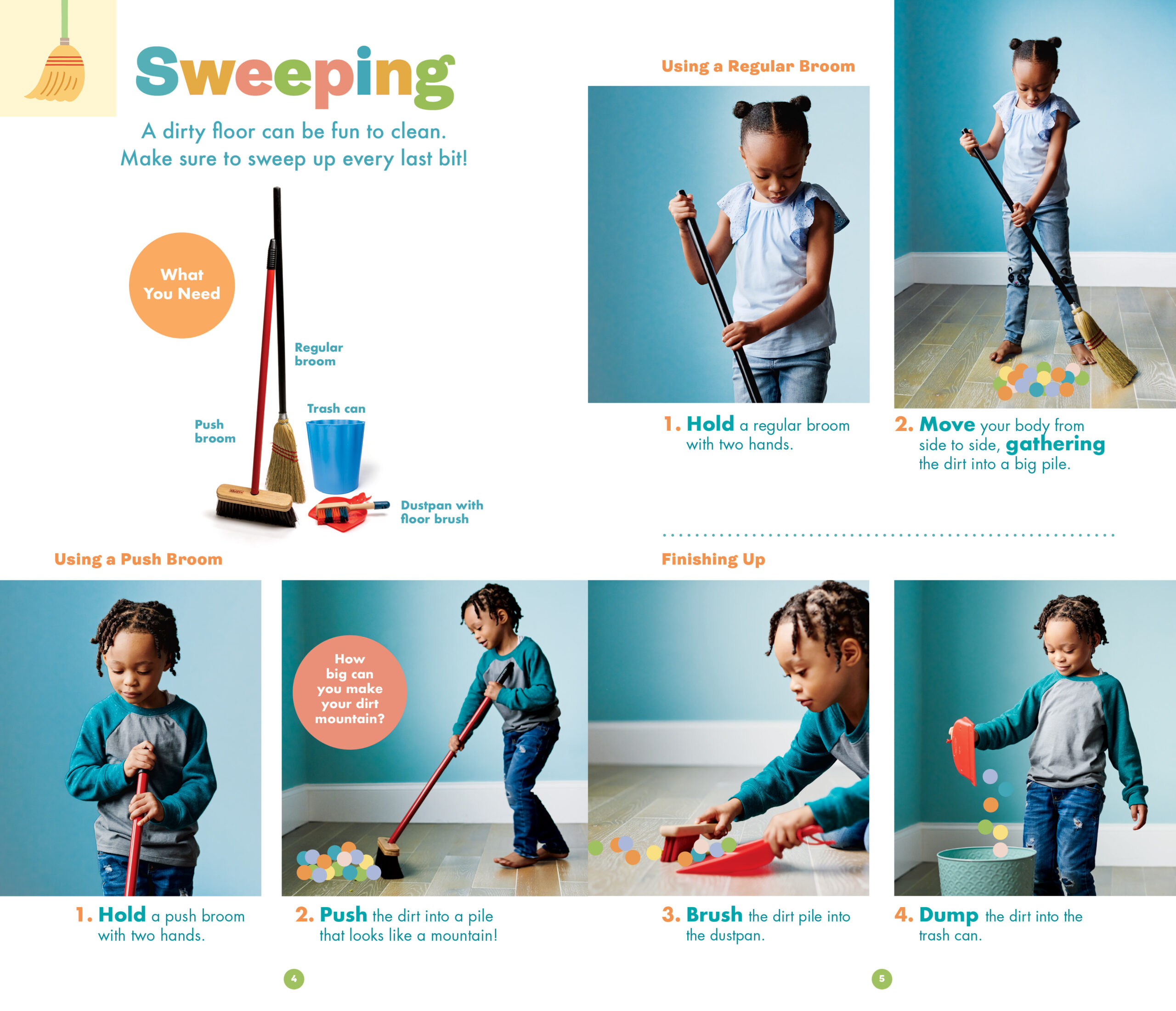
3. Would you like to tell us about 1 or 2 of your favourite activities that you have included in your book?
One of my favorite activities in I Help at Home is Making a Bouquet and Caring for Plants. Young children already have an innate connection to nature and doing these activities allows the child to fall into a natural sense of concentration. When I taught in a Montessori environment the students were in charge of cutting flowers each week to place on each table. I witness children connect to the color of the flowers, sitting at tables with the flowers that were their favorite color and others looking at the different parts to name them as a Science activity.
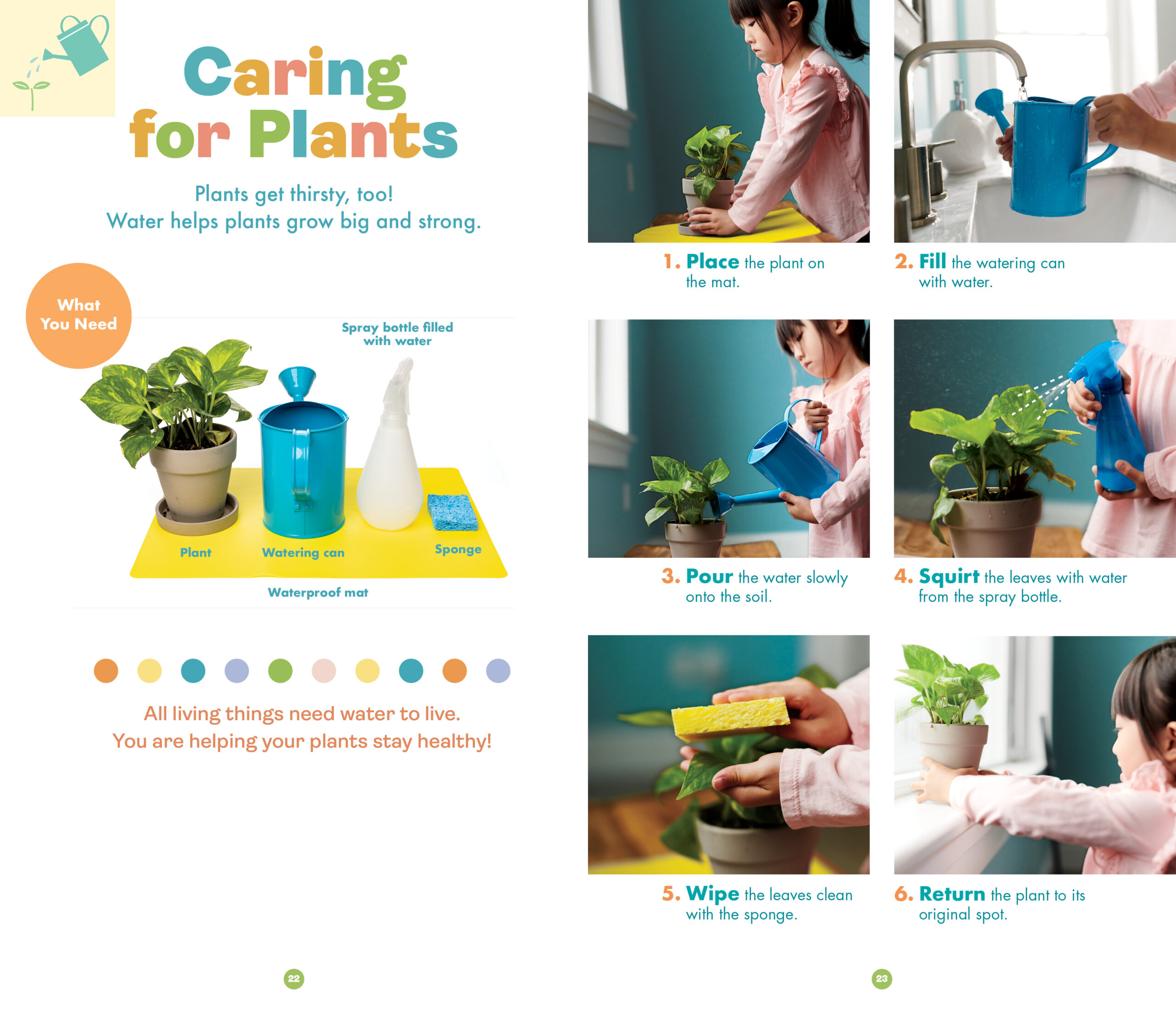
4. Do you have any tips for parents or caregivers who are worried about the mess that these activities make (especially the ones with water!)?
Always be prepared for a mess because it will happen! This is completely expected and instead of being annoyed think of it as a learning experience. Hardly ever is a child purposely going to spill something when they are first learning. Have a plan on how to clean up messes before beginning an activity, allowing the child to be a part of that process as well. There are many tips for examples exactly like this on the online Tips for Grown Ups section. (You can download these guides free here: I Did It Myself Tips, I Help at Home Tips).
5. In your experience with children from diverse backgrounds, how can we adjust these activities to meet each child’s individual needs?
I always look at Montessori lessons or activities as a blueprint and adjust according to the child. Observation on how the child works with materials can be very telling of what the little one is comfortable doing. As long as the aim of the lesson is being met then activity can be altered. Sometimes even realizing how much a guide is correcting the same behavior in a student is a learning curve in itself. For example, I always liked to keep a quiet classroom and would remind students to whisper until they were able to control the sound of their voice. I found myself constantly correcting the volume of one particular student’s voice until I realized that talking loudly ran in their family!
6. Why do you find helping a child achieve independence in these areas so important?
The practical life activities all have a direct aim or benefit but beyond that are so many indirect benefits for the child. In order to do complex, multistep mathematics the child has to be able to concentrate. This skill is developed in practical life lessons while the child might be learning how to wash their hands or set the table. Also, these activities teach the child independence allowing them to do things for themselves. Once a child can proudly say, “I did it!” then confidence is born which will give the child the push to combat challenging activities or life lessons.
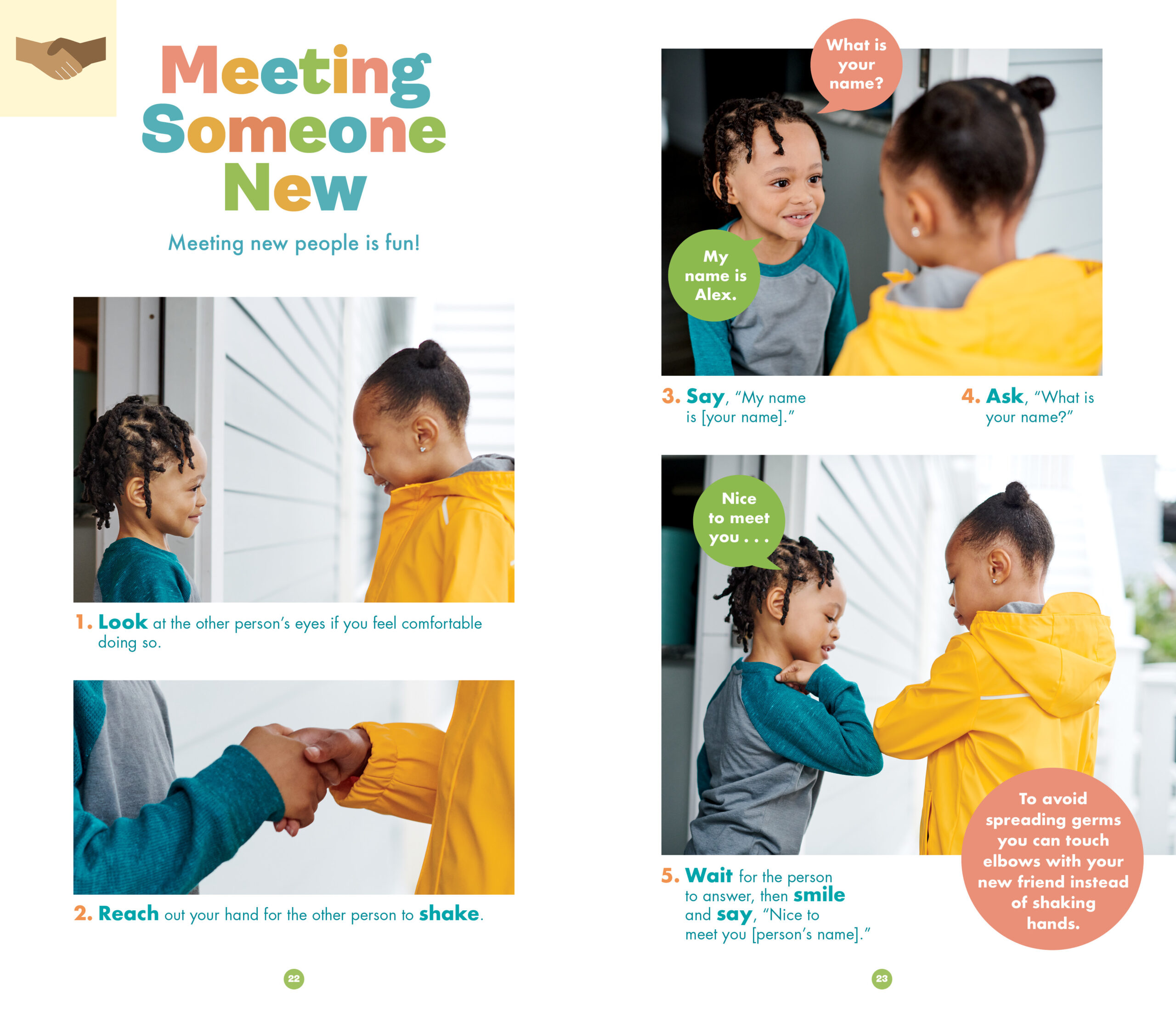
7. Tell us a little about your new books I Help at Home! and I Did It Myself!
I always want to provide families with an accessible and affordable way to start incorporating the Montessori philosophy. For people who might think it is overwhelming or expensive I wanted to show that it can be quite the opposite. I know how beneficial these lessons have been for children that I have taught and I want to provide the same benefits to more children around the world. I worked hard to provide photographs of real children doing the activities so that little ones can easily model the steps. When I was originally writing the manuscripts we realized that each activity had so much information (the direct and indirect benefits) that we had to make a separate online portion of the book. The online version provides alternatives to the materials, advice on how to help the child clean up any messes and even the benefits beyond what is presented through the activities. (See link above to download)
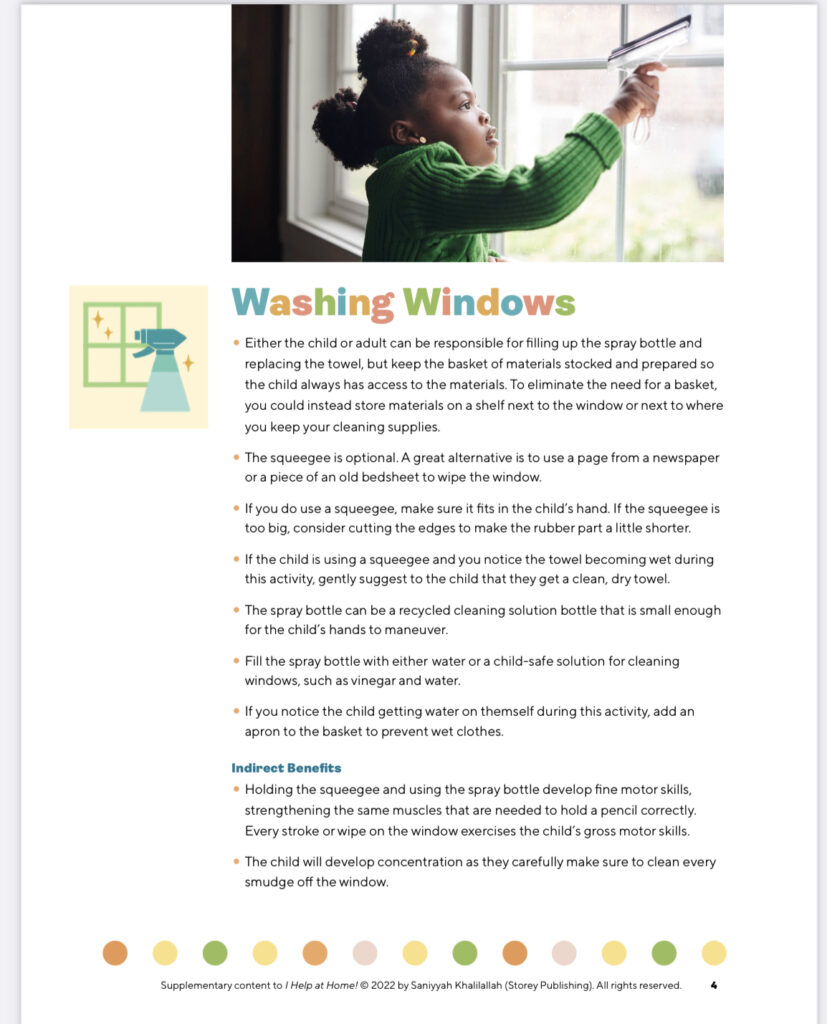
8. What if our child is not showing any interest in these activities? Any tips?
I always tell adults to model what they would like to see their child doing. If something doesn’t spark the interest of a child then start doing the activity in your regular routine. For example, if your child is not interested in dusting furniture then start dusting the furniture yourself. Do the dusting the exact same way that you would want the child to do it, using the exact materials you would give to your little one. Children are always watching the adults in their life and will innately model after them.
Also, including the child in everyday responsibilities gives your little one a connection to their environment. When the child realizes that if the dust is not cleaned then others can sneeze, for example, then they will see how important they are as part of the family or school unit.
If this doesn’t work then take a break from the activity and move on to something else that the child enjoys! Never force the child to do something that they do not want to do, this could cause an unnecessary power struggle.
Thank you so much Saniyyah for sharing your love of practical life activities with us. I hope you are all feeling as inspired as I am to keep our children involved at home and at school. Be sure to follow Saniyyah (website and instagram) and of course check out the books too – I Did It Myself and I Help At Home (links to Saniyyah’s Amazon store).
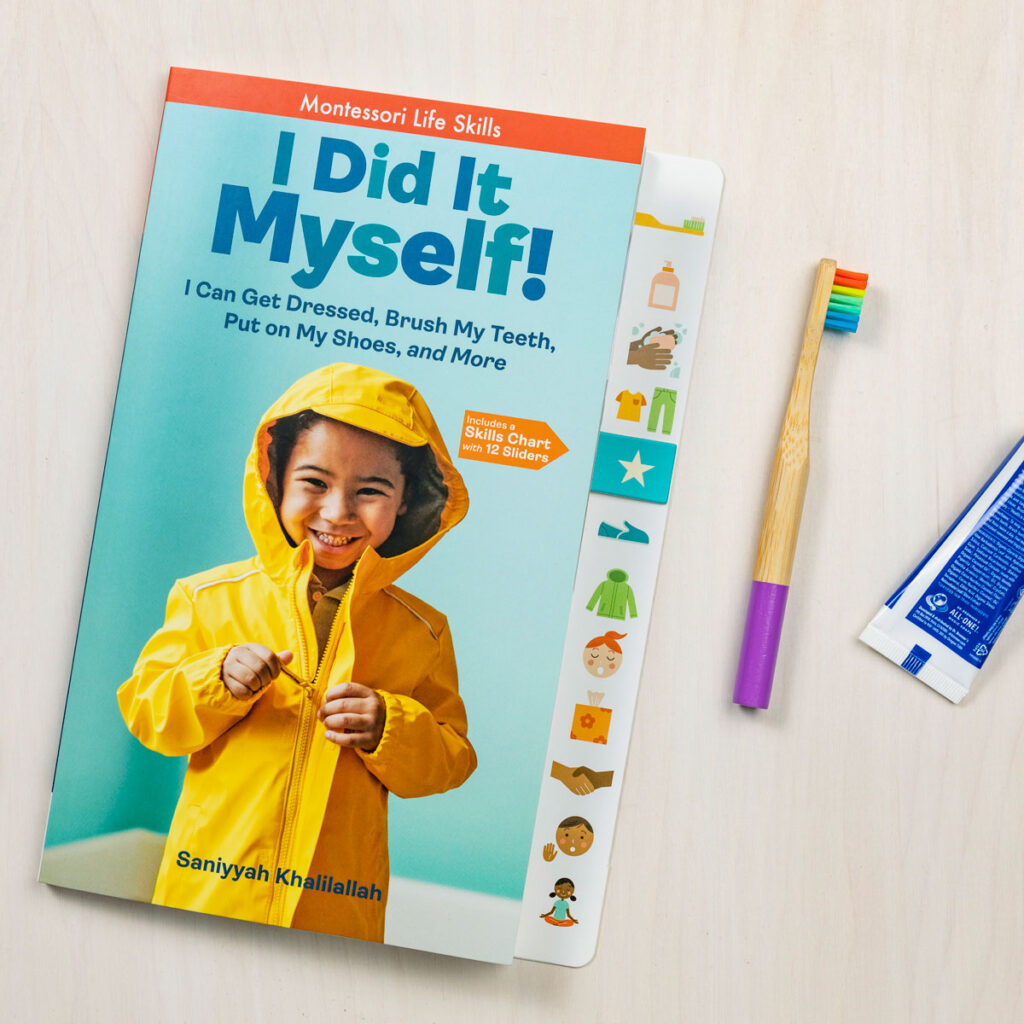
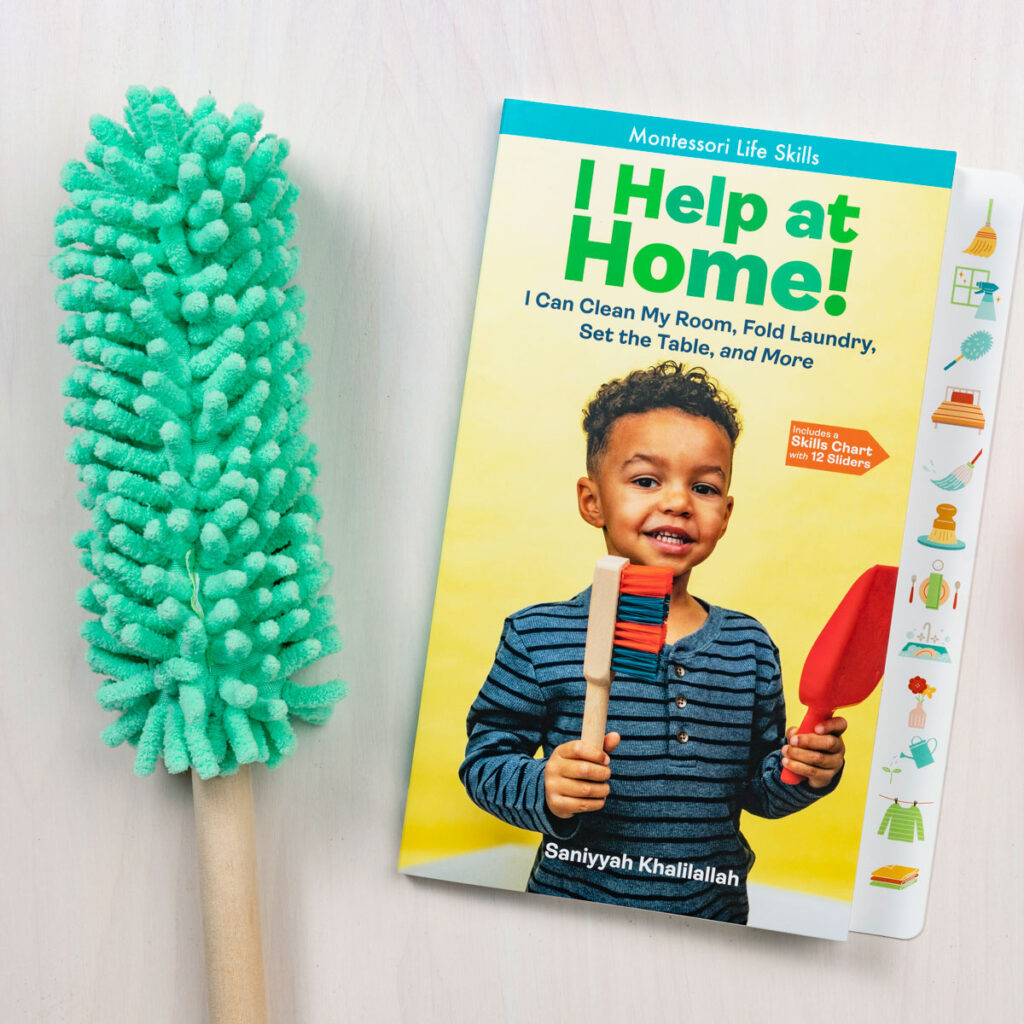
Want more Montessori activities?
Check the activities posts here for lots of ideas
A list of age-appropriate chores here
A free 44-page PDF download of Montessori activities here
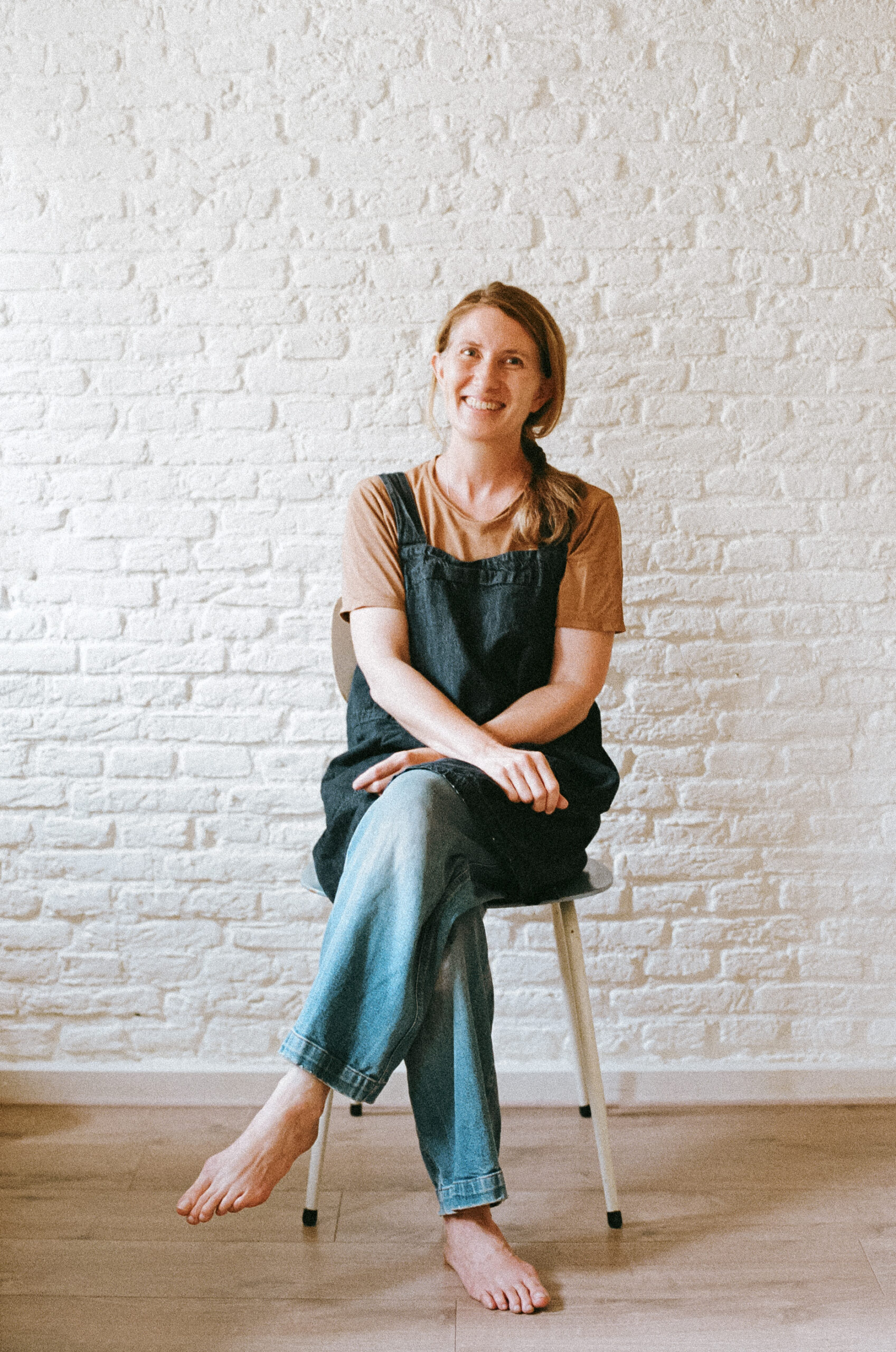
Simone Davies has more than 20 years’ experience as an AMI Montessori educator. Simone is the author of “The Montessori Toddler” and co-author of “The Montessori Baby” and “The Montessori Child” books, comprehensive guides to raising children in a Montessori way. She currently runs parent-child Montessori classes in Amsterdam at her school Jacaranda Tree Montessori. She also has a popular blog, instagram and podcast “The Montessori Notebook” and is mother to two young adults.